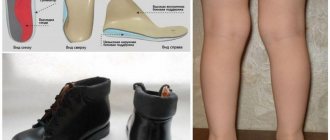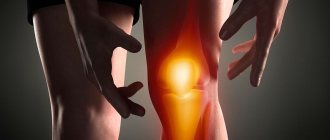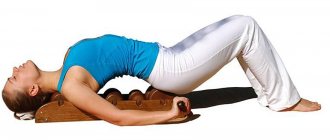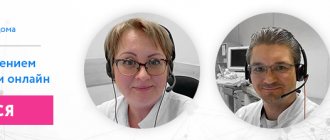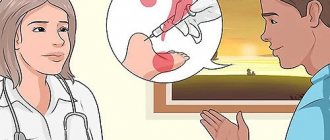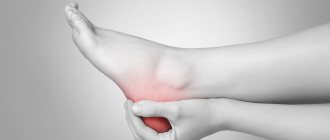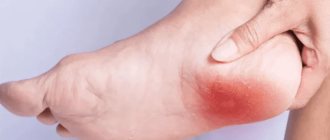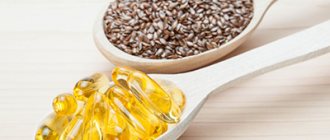A. Yu. Baranovsky, Professor, Head of the Department of Gastroenterology and Dietetics, North-Western State Medical University. I. I. Mechnikova, St. Petersburg
L. I. Nazarenko, Professor of the Department of Gastroenterology and Dietetics, North-Western State Medical University. I. I. Mechnikova, St. Petersburg
Osteoporosis is one of the most common diseases in its classification group with a particularly pronounced degenerative-dystrophic syndrome, and is also a disease in the diet therapy of which specialists often encounter difficulties and, unfortunately, make mistakes.
Error correction
The causes of dietary errors in patients with osteoporosis, in our opinion, are numerous and depend, as a rule, on the professional competence of a specialist - nutritionist, therapist, rheumatologist, general practitioner - in matters of the causation of the disease in a particular patient, dietary selection of a list of deficient minerals, vitamins , determining in this regard the appropriate products and their adequate quantities in the daily diet.
Important and difficult questions that doctors often face with osteoporosis are: the most appropriate methods of culinary food processing recommended for patients, the prescription of dietary agents aimed at increasing the absorption of deficient minerals in the intestines, as well as rational combinations of foods and medicines that exclude them antagonism. Based on this, we will provide the necessary information that can compensate for the professional gaps of doctors in those basic issues that can cause dietary errors in patients with osteoporosis.
Real situation
So, osteoporosis is a disease of the skeletal system, in which the risk of developing bone fractures increases even with a slight habitual load.
Osteoporosis is one of the most common diseases, which, unfortunately, has not yet found proper understanding in Russian medical practice. According to statistics, 25 million Americans have osteoporosis or are at high risk of developing it. More than a quarter of a million hip fractures and more than half a million vertebral fractures are associated with osteoporosis each year. Osteoporosis mainly affects women (80% of all patients with osteoporosis) and people of older age groups. This is especially important because the life expectancy of the population of civilized countries is increasing. Hip fracture in people over 65 years of age is a high risk factor for death (20% per year after fracture), more than half of patients never return to their original functional state. The financial costs associated with osteoporosis exceed $10 billion annually.
The medical and socio-economic losses are so great that WHO places the problem of osteoporosis in fourth place after cardiovascular diseases, cancer and diabetes. In recent years, more attention has been paid to the problem of osteoporosis in Russia: centers for the treatment and prevention of this disease have been created and specially equipped in large cities, but the problem is far from being resolved.
When to think about calcium deficiency
If you have a lack or deficiency of vitamin D, if you don’t get enough sun exposure, drink little or no milk and dairy products, for example due to an allergy or lactose intolerance, follow special types of diet (high protein diet, veganism, etc.) .), if you are addicted to caffeine (coffee, strong tea, chocolate), then you should think about the lack of calcium intake from food. By the way, foods such as spinach, greens, rhubarb, and beans, although rich in calcium, also contain oxalic and phytic acids. As a result, insoluble calcium-oxalate and calcium-phytate complexes are formed, which does not allow calcium to be absorbed.
Diseases of the kidneys, parathyroid glands and inflammatory bowel diseases also disrupt the calcium balance in the body.
What are the dangers of uncontrolled use of calcium?
Treatment of osteoporosis must be carried out in stages. It is not recommended to immediately switch to a calcium diet or consume large amounts of dairy products, supplementing them with calcium supplements:
- the volume of the substance does not affect its absorption;
- lack of enzymes affects absorption;
- not all components are useful;
- an excess causes kidney stones and atherosclerotic plaques.
Self-treatment involves taking biologically active food supplements, vitamin complexes and calcium supplements, taking into account prior consultation with a doctor, after determining intake standards. You need to do tests for:
- bone mineral density;
- level of microelements in the blood;
- hormone levels.
It is not recommended to take medications containing calcitonin or osteocalcin. They can disrupt the endocrine system.
What causes hypercalcemia?
The appearance of hypercalcemia may be associated with an increase in the degree of absorption of calcium in the gastrointestinal tract or with a deficiency of its intake into the body. The disease often appears in those who take large amounts of calcium-containing drugs. Consumption of large quantities of dairy products plays an equally important role in the development of hypercalcemia. The disease, according to doctors' diagnosis, occurs due to hyperparathyroidism.
If a patient is diagnosed with the first signs of osteoporosis, a comprehensive treatment is necessary, which will include foods and preparations with the necessary calcium content, as well as means that normalize the functioning of this substance in the body. Including an element such as calcium in the diet will help prevent the development of the disease.
What tests to take
It is difficult to detect calcium deficiency using a blood test, because the body does everything possible to maintain a constant level of ionized calcium in the blood. But it’s easy to be deficient or deficient in vitamin D by taking a blood test for 25-OH vitamin D.
To identify contraindications and evaluate the effectiveness of treatment with calcium preparations, you should take tests:
- Calcium and phosphorus in the blood
- Calcium in daily urine
- Blood creatinine
- 25-OH vitamin D
In the Lab4U laboratory this can be done with a discount of up to 50%.
Candidate of Medical Sciences, rheumatologist of the highest category, head of the department of endocrinology and osteoporosis Irina Alekseevna Shafieva answers patients’ questions on the problems of osteoporosis .
- What is osteoporosis and osteoarthritis?
- Do only women suffer from osteoporosis?
- How can I suspect that I have osteoporosis, what symptoms should I pay attention to?
- If you have already been diagnosed with osteoporosis, what physical activity is necessary?
- Can osteoporosis and osteoarthritis occur in the same person?
- Tell us what leads to otheoporosis?
- If osteoporosis doesn't hurt, then why do older people suffer from back pain so often?
- What examination is needed to diagnose osteoporosis?
- What laboratory tests and why should patients with osteoporosis undergo?
- How to eat properly with osteoporosis?
- How important is vitamin D?
- If we take vitamin D, do we need to take calcium?
- If we regularly take calcium and vitamin D, do we need any other medications?
- Do I need to take breaks from taking calcium and vitamin D?
- How is osteopenia different from osteoporosis?
- Should osteopenia be treated?
- Is it necessary to wear a corset if you have osteoporosis?
- Which corset to choose for osteoporosis?
- How to determine which corset is right for me?
- Should I sleep in a corset?
- In what mode should you wear a corset?
- Has osteogenone been proven effective in preventing osteoporosis?
- Have any studies compared the effects of calcium carbonate and osteogenone on back and knee pain and quality of life in perimenopausal women with osteopenia?
- How to make an appointment with a rheumatologist?
What is osteoporosis and osteoarthritis?
— Patients often confuse these two concepts. Osteoarthritis is a joint disease characterized by pain in the joints mainly during movement, but sometimes also at rest. Osteoporosis is a disease in which bone becomes thinner and more fragile and breaks easily. Pain in osteoporosis occurs against the background of fractures. Brittle bone itself does not hurt. To the list of questions
Do only women suffer from osteoporosis?
- Not always. The risk group for developing osteoporosis includes older men over 70 years of age and men who lack testosterone, the main male sex hormone. One in eight men suffers from osteoporosis. As for women, according to modern canons, every woman in menopause who has suffered any fracture due to a fall from a height of her own body should be referred to a rheumatologist. To the list of questions
How can I suspect that I have osteoporosis, what symptoms should I pay attention to?
“Unfortunately, we don’t feel whether our bones are healthy or not. This is why osteoporosis is called the “silent epidemic of the 21st century.” Excessive loss of calcium from bone tissue, i.e. Osteoporosis does not appear outwardly for a long time. Meanwhile, the risk of osteoporosis exists in every 3 women and every 5 men over the age of 50 years. Meanwhile, a decrease in height by 2-3 cm is possible, associated with compression of the vertebrae. As a result, height may decrease by 10-15 cm. The next symptom is a change in posture in the form of curvature of the spine. Recurrent fractures occurring at low levels of trauma. It is difficult to treat osteoporosis, since its manifestations are detected already in the later stages of the disease. There is no need to wait for an accident to happen, the main task is to prevent it! Bones are built from living tissue in which metabolic processes constantly occur. The healthier the bones formed in youth, the greater the chance of avoiding osteoporosis later. Therefore, it is very important to systematically consume calcium and vitamin D3 from early years of life with food and in the form of medications as prescribed by a doctor. Another prerequisite for the treatment and prevention of osteoporosis is physical education. Because new bone beams are formed mainly in areas of power loads. If a person is young, then game sports can be recommended for the prevention of osteoporosis - jumping increases bone density, and for older people I would recommend Nordic walking. To the list of questions
If you have already been diagnosed with osteoporosis, what physical activity is necessary?
- Low physical activity - physical inactivity, which is so common among urban residents - is a serious risk factor for the development of osteoporosis. Therefore, it is necessary to pay due attention to physical exercise, walking (at least 30 minutes a day for people in older age groups), and active recreation. However, it should be understood that excessive stress is not recommended for people with osteoporosis, since their bones can be injured even with minor physical exertion. For patients with osteoporosis, specialists have compiled a set of exercises, which is posted on our website. The effectiveness of these exercises has been proven by scientific research. In addition, there are special exercise machines - correctors, which help strengthen the back muscles. To the list of questions
Can osteoporosis and osteoarthritis occur in the same person?
— Yes, although previously these were considered mutually exclusive concepts, it has recently been proven that these two diseases often develop in parallel, and the risk factors for the development of these diseases largely overlap. To the list of questions
Tell us what leads to osteoporosis?
— There are certain risk factors for developing osteoporosis. We can influence some risk factors by changing our lifestyle, but not others. Risk factors include:
Uncontrollable - do not depend on the person himself:
- low bone mineral density
- female
- age over 65 years
- presence of osteoporosis and/or fractures due to minor trauma in relatives (mother, father, sister) aged 50 years or older
- previous fractures
- some endocrine diseases
- early (including surgical) menopause in women
- low body mass index and/or low weight
- taking glucocorticoids - long-term immobilization (bed rest for more than 2 months)
Controlled - depend on lifestyle and behavior and can be eliminated:
- low calcium intake
- vitamin D deficiency
- smoking
- alcohol abuse
- low physical activity
- tendency to fall To the list of questions
If osteoporosis doesn't hurt, then why do older people suffer from back pain so often?
— Pain in the lower back combines a wide range of diseases of the spine and lesions of the muscular-ligamentous structures of the back (dorsopathy). Pain in the lower back can be primary (caused by degenerative and functional changes in the tissues of the musculoskeletal system) and secondary (associated with inflammatory, metabolic, neoplastic, infectious, traumatic lesions of the spine). Musculo-ligamentous disorders are among the most common causes of pain. They are characterized by muscle dysfunction and the formation of local painful compactions in the affected muscles. Skeletal pain in people with spinal deformity is associated mainly with overload of the joints and ligaments of the spine and occurs during prolonged walking, carrying and lifting heavy objects, after working in an unusual position. Such pain most often affects people with weak muscles and instability in the motor segments of the spine. To the list of questions
What examination is needed to diagnose osteoporosis?
— The most accurate study (which allows you to diagnose 1-2% of bone mass) is X-ray densitometry of the femoral neck and lumbar spine. It must be repeated no more than once a year, first to clarify the diagnosis, then to monitor the effectiveness of treatment. To the list of questions
What laboratory tests and why should patients with osteoporosis undergo?
— At the first stage of diagnosis, you need to make sure whether osteoporosis is a separate disease (primary), or whether some other diseases lead to fractures (secondary osteoporosis). Therefore, for an initial appointment with a rheumatologist, it is necessary to undergo a series of laboratory blood tests: a complete blood count, test the blood for total calcium, phosphorus, alkaline phosphatase, total protein, urea, creatinine, parathyroid hormone, transaminases. In addition to diagnosis, this is necessary for selecting drug therapy. To the list of questions
How to eat properly with osteoporosis?
— It is necessary to strive for optimal calcium intake in food. In old age, 1500 mg of calcium per day is needed. The richest foods in calcium are dairy products (milk, cottage cheese, cheese), fish, and vegetables. However, it is known that calcium is not absorbed from food without sufficient vitamin D content (if in childhood there is a high absorption of calcium from food (75%), then in adults it is 25-30%, and without combination with vitamin " D" - only 10%). Vitamin “D” is formed in the skin under the influence of sunlight and comes from food (certain types of fish - salmon, tuna; eggs, oil). In old age, you need 800 IU of vitamin D per day. Unfortunately, about 50% of the population does not receive enough calcium and vitamin D from their diet. This is where drug therapy comes to the rescue. But only a doctor can prescribe adequate treatment. To the list of questions
How important is vitamin D?
— Vitamin D promotes the absorption of calcium in the intestines and maintains the necessary levels of calcium and phosphate in the blood to ensure mineralization of bone tissue. It is also necessary for bone growth and the process of bone turnover, i.e. work of bone tissue cells. According to a number of researchers, the functions of vitamin D are not limited only to the control of calcium-phosphorus metabolism. It also affects other physiological processes in the body: provides protection against the growth of tumor cells, provides muscle strength, reduces the risk of falls, affects immunity, inflammatory diseases, skin and hair condition, has an anti-atherosclerotic effect, and is a prevention of senile dementia. Vitamin D deficiency is common in obesity and type 2 diabetes. To the list of questions
If we take vitamin D, do we need to take calcium?
— For the treatment of osteoporosis, it is recommended to continuously take calcium and vitamin D supplements without interruptions for the entire course of treatment, since this is a building material for bone tissue. Calcium supplements are available in several calcium salts and in various forms. Preference is given to calcium carbonate, since this salt contains the largest amount of calcium ion. To separate calcium from carbonate, the presence of hydrochloric acid is necessary, the maximum amount of which is produced during food intake. Therefore, for this calcium salt, it is recommended to take it during or after meals, while taking it on an empty stomach can lead to a decrease in calcium absorption in the gastrointestinal tract by 30-40%. To the list of questions
If we regularly take calcium and vitamin D, do we need any other medications?
— The doctor must prescribe you a drug to normalize bone metabolism in addition to calcium and vitamin D. To the list of questions
Do I need to take breaks from taking calcium and vitamin D?
— 1500 mg of calcium is the daily requirement for a patient with osteoporosis. The patient needs this dose daily. Therefore, it is not advisable to interrupt the course of treatment with calcium preparations. More detailed information on treatment can be found on our website. To the list of questions
How is osteopenia different from osteoporosis?
— Osteopenia is the initial manifestation of osteoporosis. Osteopenia and osteoporosis can be distinguished by the results of X-ray densitometry based on bone density (T-score).
| Norm | T-score values from + 2.5 to - 1 standard deviations from peak bone mass |
| Osteopenia | T-test scores from −1 to −2.5 standard deviations |
| Osteoporosis | T-test indicators −2.5 standard deviations and below |
| Severe osteoporosis | T-criterion scores −2.5 standard deviations or lower with a history of one or more fractures |
To the list of questions
Should osteopenia be treated?
— If the T criterion is −2 standard deviations or lower, drug therapy is certainly indicated. If the T score is below −1.5 standard deviations, risk factors for osteoporosis should be examined. If several risk factors are present, drug therapy should also be started. In the absence of risk factors, osteoporosis is prevented with calcium and vitamin D preparations. To the list of questions
Is it necessary to wear a corset if you have osteoporosis?
- Yes. Orthopedic correction for osteoporosis is one of the main methods of treatment, because they relieve the load on the vertebrae, stopping the destructive process and reduce or completely eliminate pain.
Additional materials: Tips for selecting and wearing corsets for osteoporosis and dorsopathy
To the list of questions
Which corset to choose for osteoporosis?
— Firstly, the choice of corset depends on the affected area (lumbar, thoracolumbar or thoracolumbosacral). Requirements for corsets for spinal osteoporosis:
- The corset must have a semi-rigid fixation and have semi-rigid or rigid adjustable inserts (at least 4 stiffening ribs in the affected area).
- The corset should be comfortable to wear so as not to interfere with blood circulation, but at the same time fix the spine well.
The main thing is to correctly determine the size of the corset that matches your parameters. The corset should “hold”, but not impede blood circulation.
Additional materials: Tips for selecting and wearing corsets for osteoporosis and dorsopathy
To the list of questions
How to determine which corset is right for me?
— When purchasing a corset, you must try it on. The consultant should “adjust” the corset to your body structure, and only after you are convinced that you are comfortable in the corset should you purchase it. Remember, you should not experience inconvenience, additional pain or discomfort when using the corset correctly.
Additional materials: Tips for selecting and wearing corsets for osteoporosis and dorsopathy
To the list of questions
Should I sleep in a corset?
— No, in a lying position, the corset must be removed. To the list of questions
In what mode should you wear a corset?
- You cannot wear a corset at night.
- The corset should be worn for a period of time determined by your doctor, it depends on the severity of osteoporosis and the clinical picture. Otherwise, prolonged or insufficient wearing of the corset can lead to undesirable results.
- During heavy physical activity, the corset cannot be removed.
- The corset leads to increased blood circulation, as a result of which it can also perform a warming function. It is because of this that you need to be careful after removing the corset: do not sit in drafts, do not change the temperature suddenly, etc.
- If the corset changes position when you move your body, you need to retighten it.
- The corset should be worn over a T-shirt or other thin clothing to avoid chafing.
To the list of questions
Has osteogenone been proven effective in preventing osteoporosis?
— Yes, indeed, in 2015, a three-year study was conducted on 1032 perimenopausal women. This study revealed that when the drug OSTEOGENON was prescribed for prophylactic purposes, there was an increase in bone mass, while in the group where other calcium salts were prescribed, a decrease in bone mass was noted.
The following conclusions were drawn:
- With a lower dose of calcium in OSTEOGENON (712 mg), it is more effective in preventing osteoporosis than 1000 mg. calcium in carbonate salt.
- Ossein contained in osteogenone has a remodeling effect on bone tissue.
To the list of questions
Have any studies compared the effects of calcium carbonate and osteogenone on back and knee pain and quality of life in perimenopausal women with osteopenia?
— Yes, in the same study in 2015, the effect of calcium carbonate and OSTEOGENON on back pain, knee pain and quality of life in women with osteopenia in perimenopause was compared. 74 patients over the age of 55 years with complaints of pain in the back and knee joints were studied. As a result, it was revealed that in the group of women receiving OSTEOGENON at a dose of 1660 mg per day, there was a significant significant decrease in pain in the knee joints and back, compared with the group of women who received 1200 mg of calcium carbonate per day. The more pronounced analgesic effect of the drug OSTEOGENON is probably due to growth factors and the antiresorptive effect of osteogenon.
To the list of questions
How to make an appointment with a rheumatologist?
— Rheumatologist Irina Alekseevna Shafieva sees patients in Samara; you can make an appointment by calling the numbers listed on the contacts page of our website. At your appointment, the doctor will listen to your complaints, learn about past illnesses, prescribe the necessary additional tests to make a diagnosis and help you cope with the disease. To the list of questions
Who are calcium supplements indicated for?
- In the treatment of pathological fractures due to osteoporosis
- Women over 50 years of age with vitamin D deficiency or deficiency
- If you have osteoporosis
- For women who have reached menopause to prevent osteoporosis
- If you have insufficient calcium intake from food:
The daily requirement for calcium in children under 3 years of age is 700 mg, for children 4-10 years of age and adults 1000 mg. An increased requirement of up to 1200 mg is observed in women in menopause or over 50 years of age and in men over 70 years of age. Adolescents during the growing period (10-16 years), pregnant and breastfeeding women should receive up to 1300 mg of calcium.
Signs of osteoporosis in women after 50 years
The main insidiousness of this pathology is that it can be asymptomatic for a long time. In most cases, such a diagnosis is made only after a fracture of one or more bones has already occurred. You can suspect the development of osteoporosis based on the following signs:
- increased fatigue that does not go away even after rest;
- the nail plates begin to delaminate and become fragile;
- periodically there are attacks of convulsions in the lower extremities;
- development of periodontal disease;
- pain in the lumbar region, in large joints;
- the appearance of excess plaque on the surface of tooth enamel;
- early graying of hair;
- attacks of arrhythmia, tachycardia, rapid heartbeat;
- curvature of the spinal column;
- frequent fractures of large and small bones;
- decreased growth;
- quick satiation with food;
- the appearance of attacks of heartburn, pain in the chest;
- the stomach protrudes forward;
- painful sensations in the spine, hip joints.
The clinical picture in women and men is almost the same. However, women have a higher risk of developing pathological processes in the musculoskeletal system.
How much calcium should be added
Remember that you usually only need 1000-1200 mg of calcium each day. There is no point in getting more calcium. It might even be dangerous. There are recommendations that the maximum daily calcium intake should not be more than 2000-2500 mg per day. To avoid the danger of getting too much calcium and causing constipation, hypercalcemia, calcium accumulation in soft tissues, problems with the absorption of iron and zinc, it is not recommended to receive more than 1400 mg of calcium per day for a long time.
If you cannot supplement your diet with foods high in calcium (dairy products, leafy greens, nuts, beans and tofu), you can take up to 500-1000 mg of elemental calcium from supplements.
Treatment of osteoporosis in older women
It is very important to start treating the disease as early as possible. This will prevent the development of various complications and disabilities.
Diet
Proper nutrition is of no small importance in the treatment of osteoporosis. A therapeutic diet requires adherence to the following rules:
- the menu should contain food containing a large amount of calcium;
- refuse or minimize the amount of salty foods and alcoholic beverages;
- consume fermented milk products in large quantities;
- include foods that contain a lot of phosphorus, potassium, magnesium.
Exercise therapy and gymnastics
Correctly designed therapeutic exercises play a very important role in the recovery of patients after a fracture. Rehabilitation therapy must also include massage and physical therapy.
Therapeutic gymnastics involves resistance and stretching exercises - expander, horizontal bar. To evenly distribute the load on the spine, it is recommended to wear orthoses or corsets.
Medications
For therapy, doctors prescribe regulators of phosphorus-calcium metabolism. Such drugs include:
- Calcytocinins. These are substances similar to the hormones produced by the thyroid gland. These hormones slow down the thinning of bone structures, activate bone formation, and have a pronounced analgesic effect. Such drugs include Ossteover, Vepren.
- Biosphosphonates. With their help, the processes of bone loss are inhibited. These drugs help in the remineralization process. These include Bonefox, Etidronate.
- Recombinant human hormones that stimulate bone production. For example, Forsteo.
- Fluoride preparations, which improve stimulation of the formation of bone structures.
If there are severe symptoms of the disease, a treatment regimen similar to the treatment of arthrosis and arthritis is drawn up:
- non-steroidal anti-inflammatory drugs;
- painkillers;
- muscle relaxants;
- glucocorticosteroids;
- pain blockades;
- chondroprotectors.
Thanks to the listed medications, new bone mass is formed and bone destruction and thinning are prevented.
Physiotherapy
The main methods of physiotherapy are:
- diadynamic currents;
- UHF;
- interference currents;
- electrical stimulation;
- ultrasound;
- magnetic therapy;
- balneology;
- ozokerite.
ArthroMedCenter uses the following effective procedures for the treatment of osteoporosis:
- Hivamat therapy. This procedure improves blood circulation and activates recovery processes.
- Electrophoresis. Thanks to the procedure, medicinal substances act more effectively on the damaged area of bone tissue.
- SMT therapy. The procedure improves blood circulation and initiates regeneration processes in bone tissue. The overall tone of the body increases, metabolic processes occur faster.
Traditional methods of treatment
The most effective folk remedies in treating the disease are:
- dill infusion;
- infusion, decoction or oil of golden mustache;
- onion peel decoction;
- alcohol infusion from comfrey rhizome;
- dandelion decoction;
- mumiyo;
- blue clay;
- grated eggshells with lemon juice;
- decoction of burdock rhizome;
- horsetail infusion;
- centaury decoction;
- Chernobyl, sleep-grass, woodruff - collection for decoction;
- jujube, moss, speedwell, horsetail, aster - collection for infusion;
- field grass, calamus, fragrant woodruff, celery - collection;
- sage, alfalfa, horehound, red clover, fenugreek - herbal collection.
